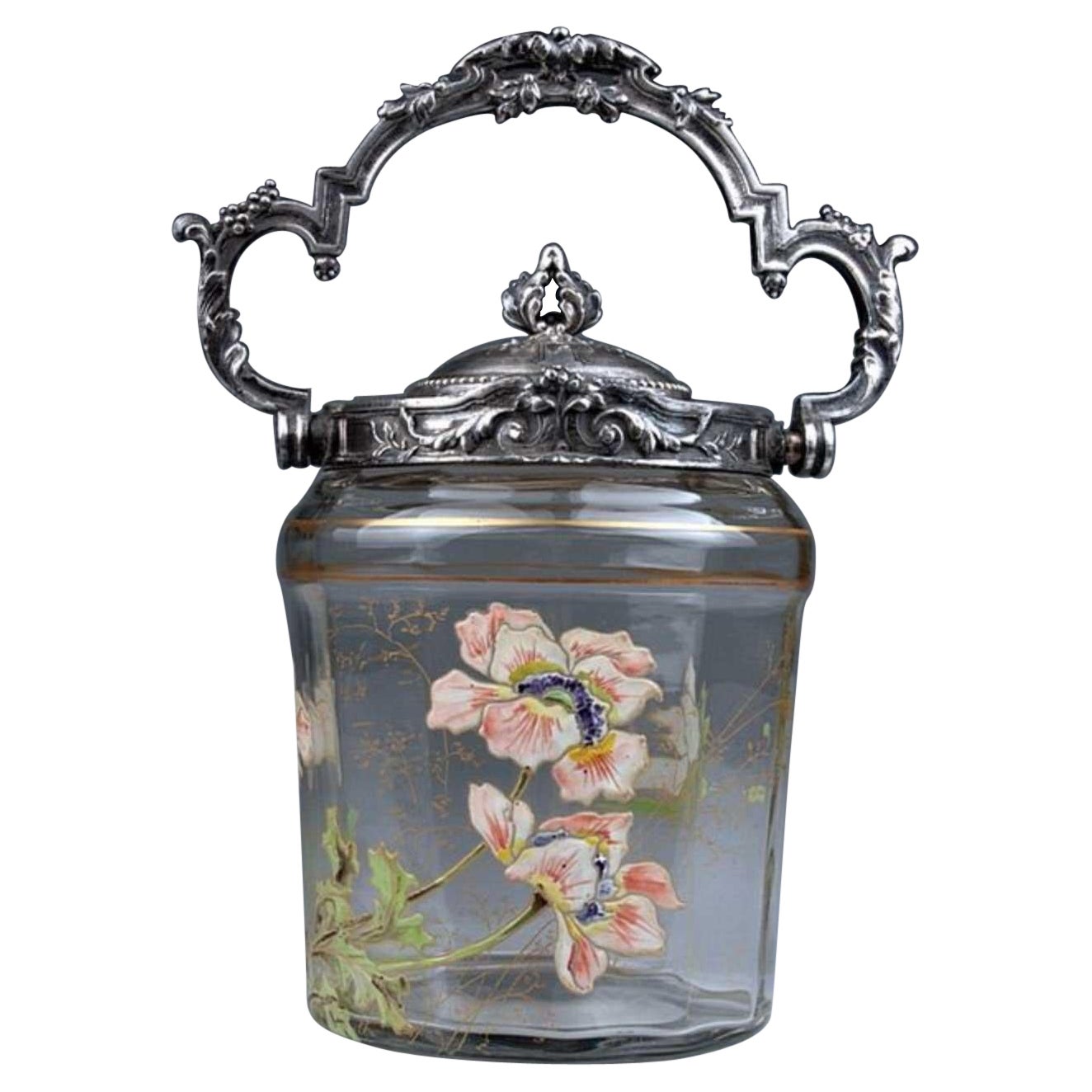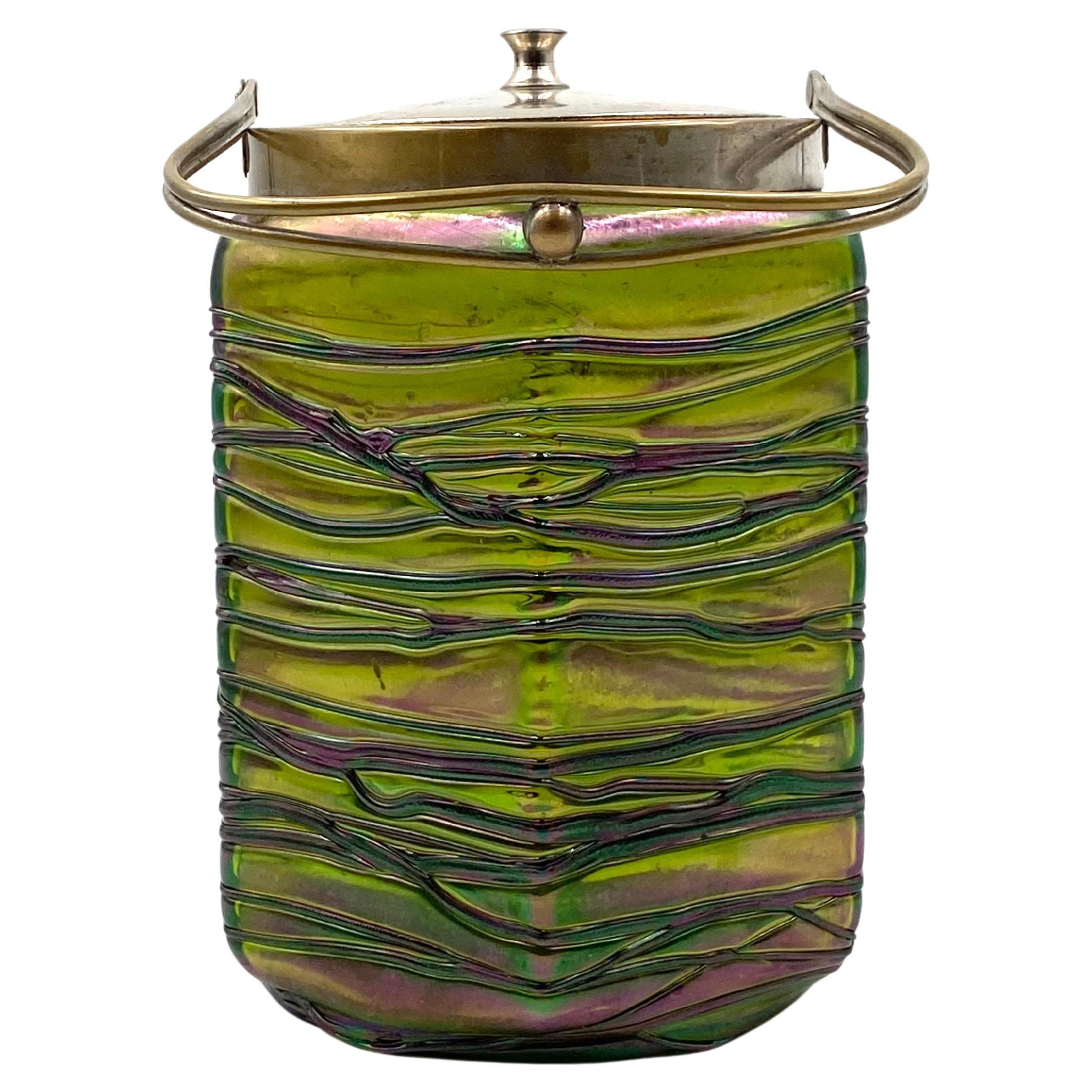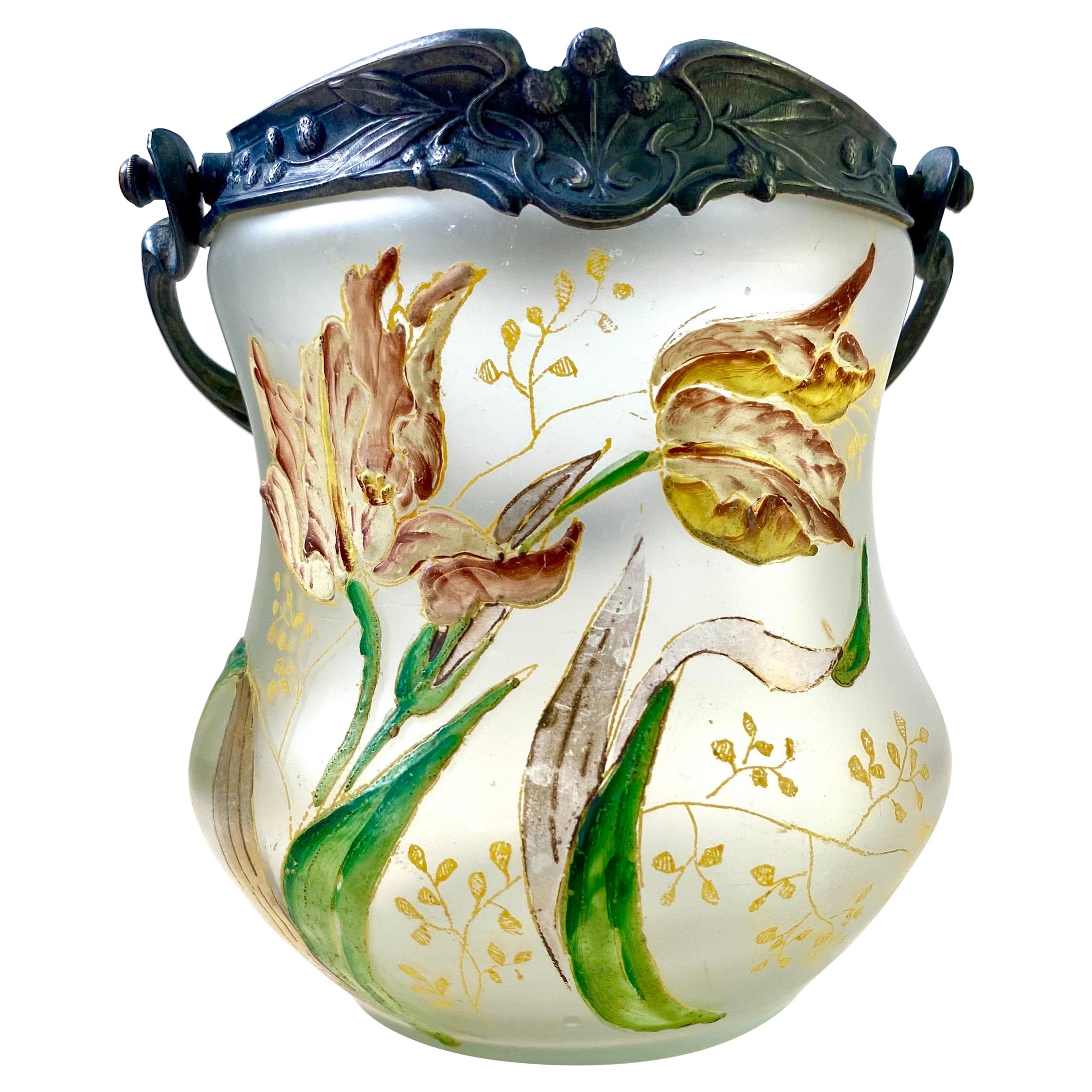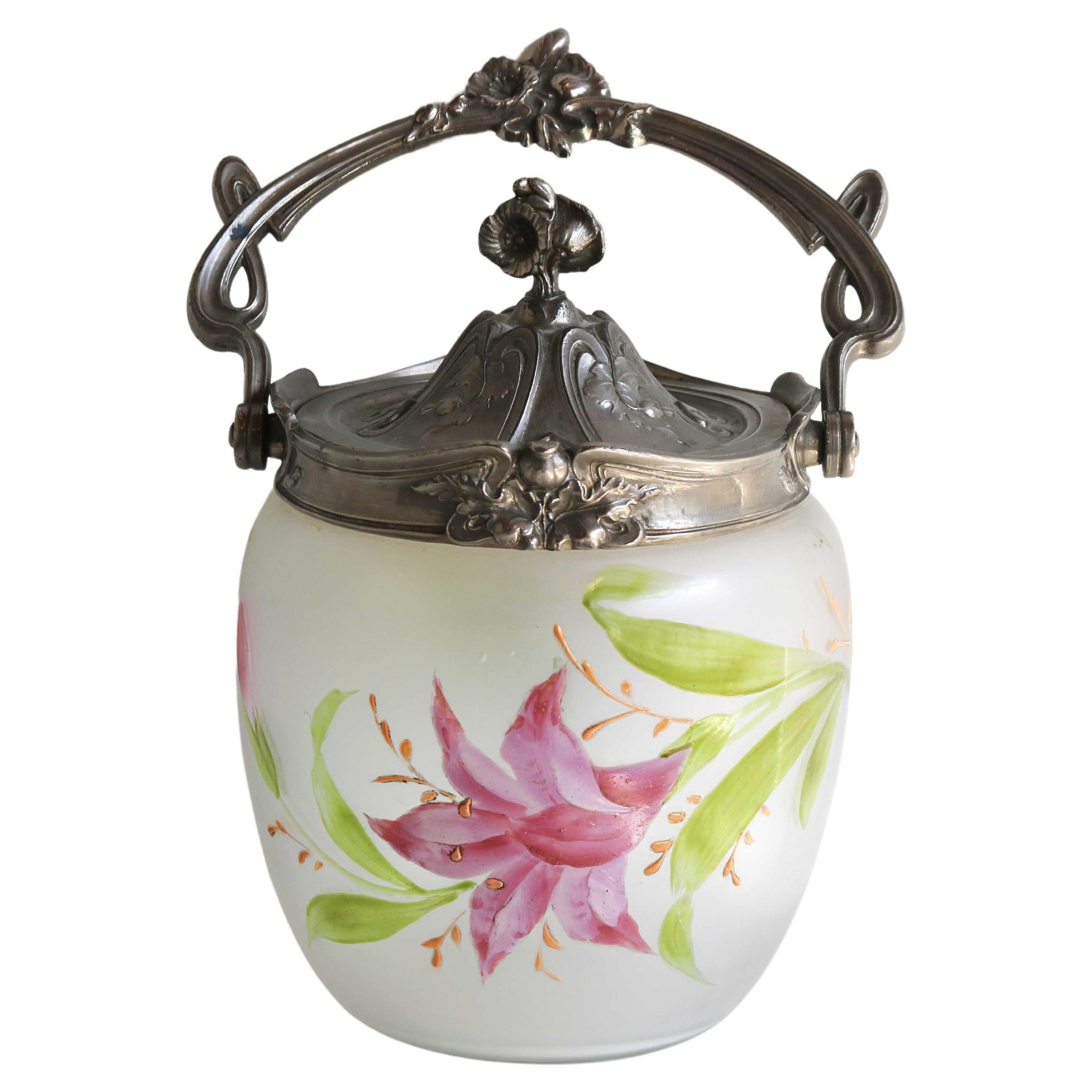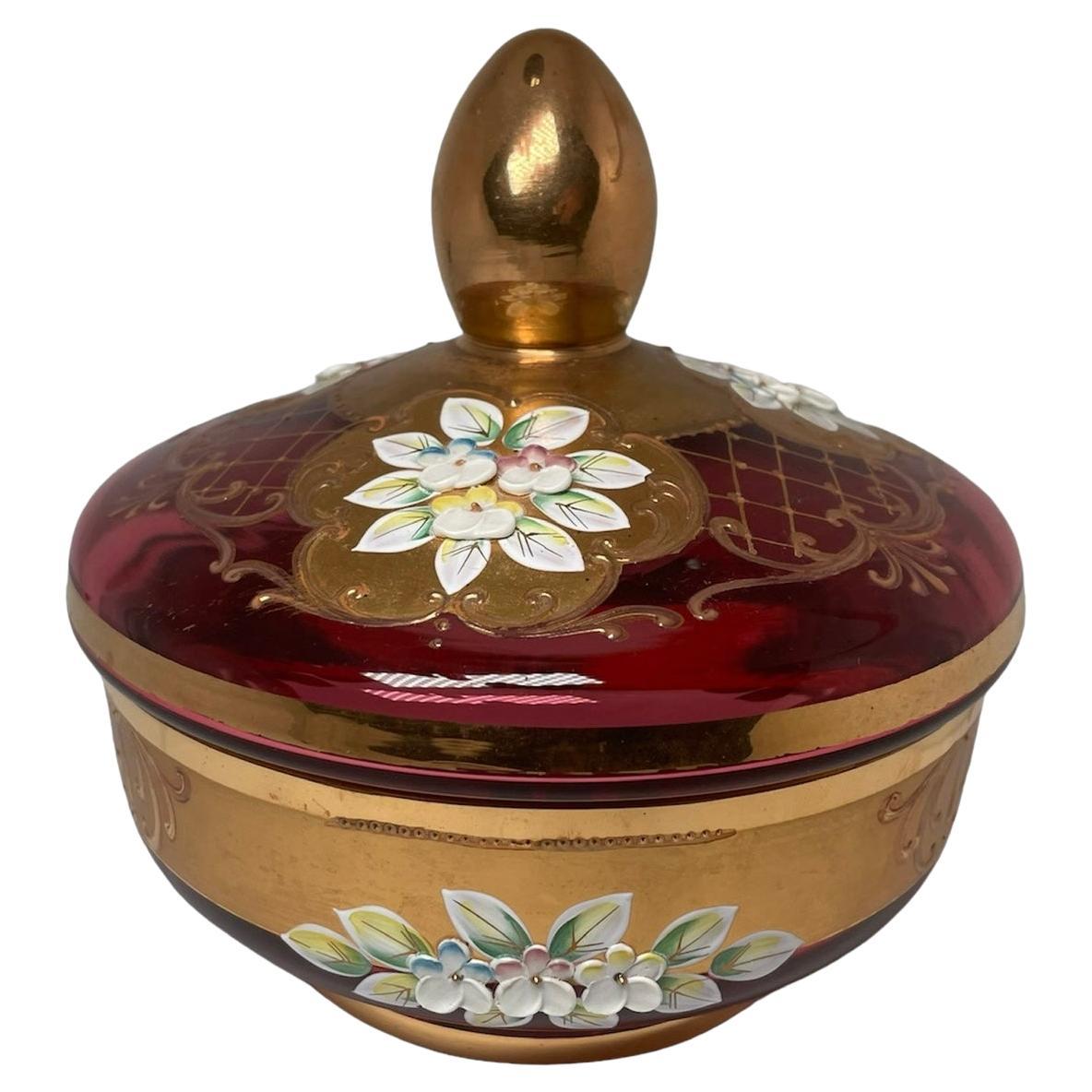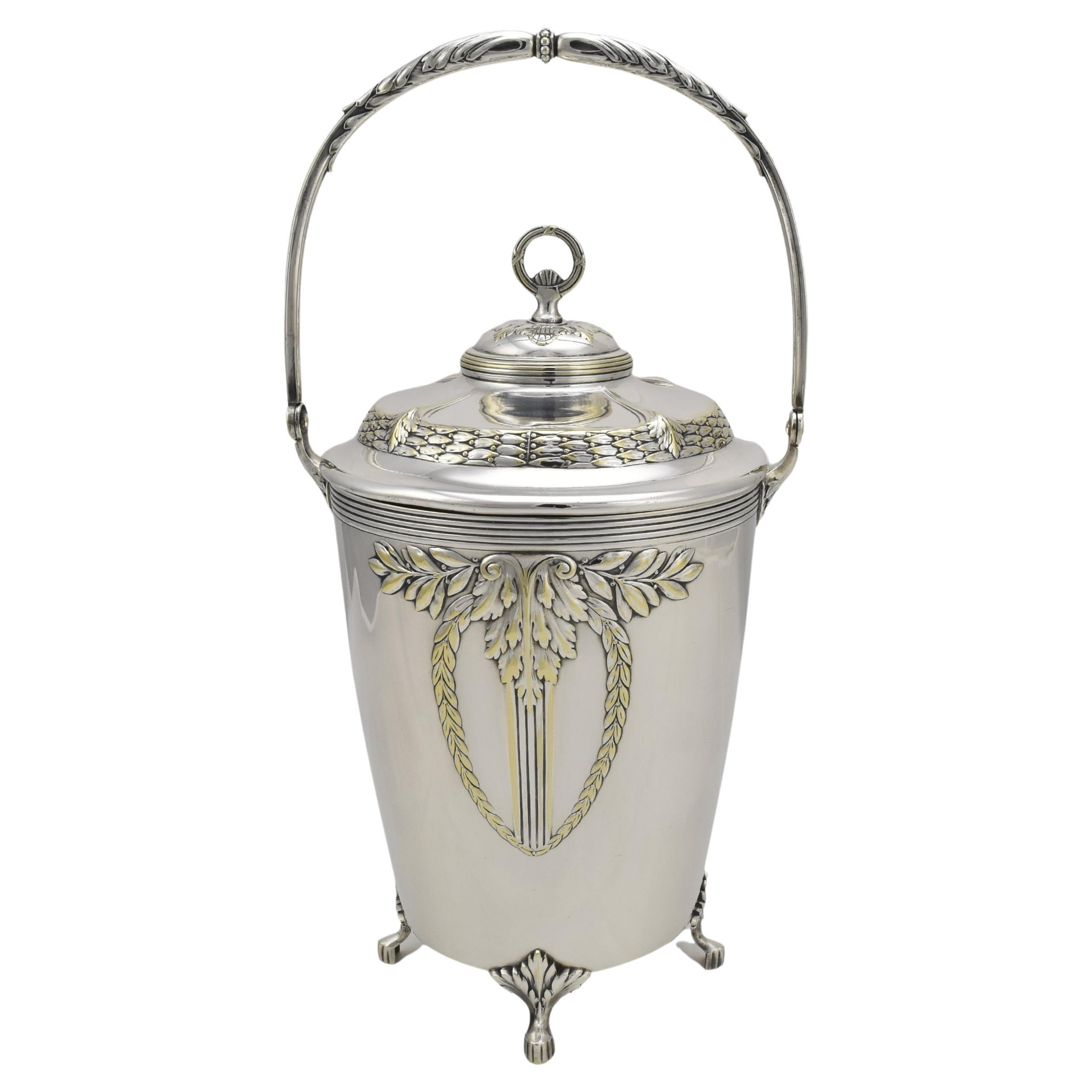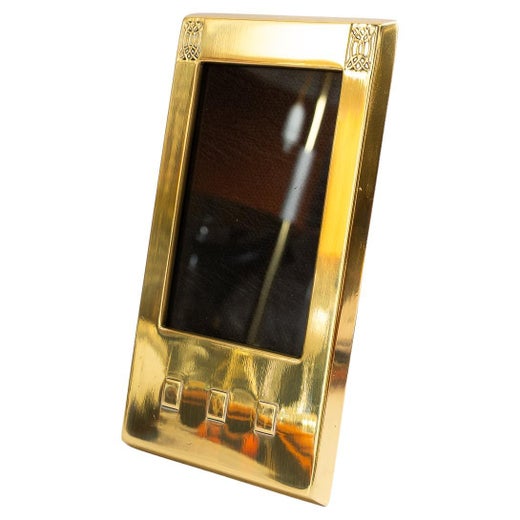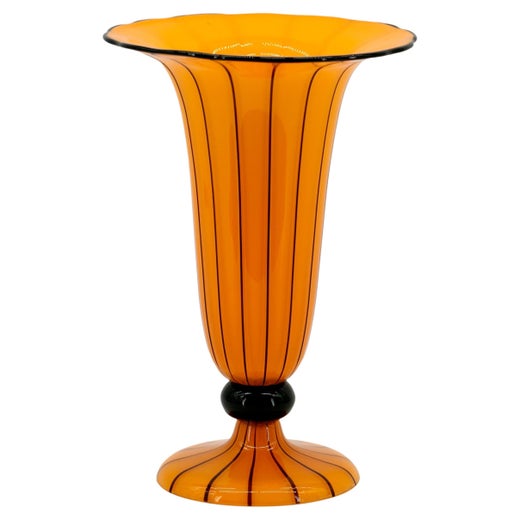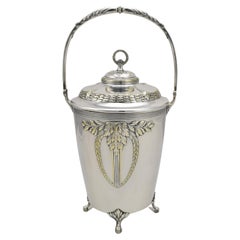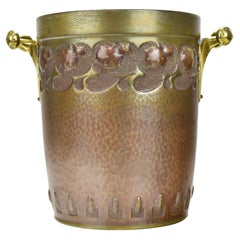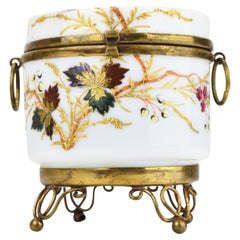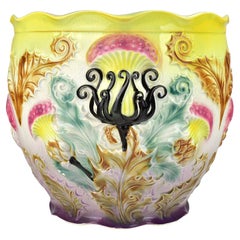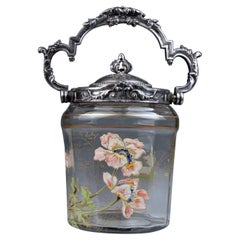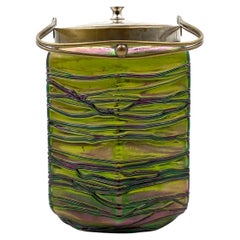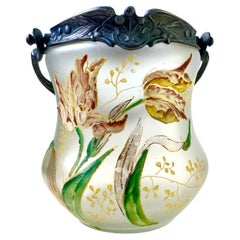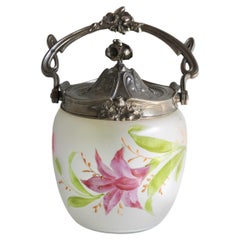Loetz Biscuit Barrel Cookie Jar Art Nouveau Iridescent Glass Antique Lötz & WMF
About the Item
- Creator:Loetz Glass (Manufacturer),WMF Württembergische Metallwarenfabrik (Manufacturer)
- Dimensions:Height: 10.63 in (27 cm)Diameter: 5.2 in (13.2 cm)
- Style:Art Nouveau (Of the Period)
- Materials and Techniques:
- Place of Origin:
- Period:1900-1909
- Date of Manufacture:1900s
- Condition:Wear consistent with age and use. Minor fading. wear to the plating of the lid and handle, the lid slightly deformed, the glass is in perfect condition.
- Seller Location:Bad Säckingen, DE
- Reference Number:1stDibs: LU7989236532202
WMF Württembergische Metallwarenfabrik
The fine brass, copper and silver metalware produced by distinguished manufacturer Württembergische Metallwarenfabrik (WMF) has adorned the tabletops of restaurants, hotels and homes around the world. WMF is especially prized by collectors for its Art Nouveau works of the late 19th century and Art Deco pieces manufactured throughout the early 20th century.
WMF traces its beginnings to 1880 when the merger of Straub & Sohn and Ritter & Co. formed the public limited company Württembergische Metallwarenfabrik. The company initially focused on tableware and decorative pieces, such as vases and planters. In 1892, WMF introduced its patented “perfect hard silver plating,” a technology that distributes twice as much silver to the sections of cutlery that experience the most wear, allowing the whole piece to hold its luster longer than other silver-plated products.
In 1905, WMF acquired a majority holding of Orivit AG, a company in Cologne that manufactured products from a tin alloy, further expanding its range of materials. By 1910, its main facility in Geislingen, Germany, employed 4,000 workers. It had branches in Vienna, Warsaw and London, and printed a catalog in 12 languages.
As a German business, WMF experienced extensive asset loss in the aftermath of the world wars. However, by 1950, its main facility once again had a workforce of more than 3,000 employees, and its high-quality products returned to popularity. There was an increase in demand for its Cromargan cutlery as well as work by WMF’s preeminent lighting designer, Wilhelm Wagenfeld.
By the 1960s, WMF’s main facility had 5,800 employees. More factories were opened to keep up with demand. WMF is now one of the largest manufacturers of metalware in the world and continues to produce pieces of superb quality. The company has over 200 branches in Germany, Austria and Switzerland, and owns branches in 40 other countries.
On 1stDibs, explore serveware, decorative objects, lighting and more from Württembergische Metallwarenfabrik (WMF).
Loetz Glass
Best known to collectors for their magnificent Marmoriertes and Phänomen glass creations, the Loetz Glass company was a leading Art Nouveau producer of fine glass vases, bowls and other decorative objects through the mid-19th and early 20th centuries.
Shortly before his death in 1855, attorney Frank Gerstner transferred sole ownership of his glassworks company to his wife Susanne. The company, which was founded in what is now the Czech Republic in 1836 by Johann Eisner, was renamed Johann Loetz Witwe by Susanne Gerstner as a tribute to her late husband who preceded Gerstner, a glassmaker named Johann Loetz (Loetz was also known as Johann Lötz).
For 20 years, Gerstner led the company, expanding its manufacturing and distribution capacity. It proved profitable, but the glassworks' popularity didn't start gaining significant momentum until after Gerstner transferred sole ownership to her grandson Maximilian von Spaun in 1879.
Von Spaun and designer Eduard Prochaska developed innovative techniques and solutions for reproducing historical styles of decorative glass objects, such as the very popular marbled Marmoriertes glass — a technique that lends glass an appearance that is similar to semi-precious stones such as onyx or malachite. Under von Spaun’s leadership, the firm’s works garnered them success in Brussels, Vienna and Munich, and Johann Loetz Witwe won awards at the Paris World Exposition in 1889. In 1897 von Spaun first saw Favrile glass in Bohemia and Vienna.
The work in Favrile glass, a type of iridescent art glass that had recently been developed and patented by Louis Comfort Tiffany, founder of iconic American multimedia decorative-arts manufactory Tiffany Studios, inspired von Spaun to explore the era’s burgeoning Art Nouveau style — or, as the firm was established in a German-speaking region, the Jugendstil style.
The company partnered with designers Hans Bolek, Franz Hofstötter and Marie Kirschner and thrived until von Spaun passed it down to his son, Maximilian Robert.
With the Art Deco style taking shape around the world, the company was unable or unwilling to adapt to change. Loetz Glass collaborated with influential names in architecture and design, including the likes of Josef Hoffmann, a central figure in the evolution of modern design and a founder of the Vienna Secession. Unfortunately, the glassworks’ partnerships did them little good, and the company’s mounting financial problems proved difficult to navigate. Two World Wars and several major fires at the glassworks took their toll on the firm, and in 1947 the Loetz Glass Company closed its doors for good.
Today the exquisite glass produced by Loetz Glass Company remains prized by collectors and enthusiasts alike.
On 1stDibs, find antique Loetz Glass Company glassware, decorative objects and lighting.
- ShippingRetrieving quote...Shipping from: Bad Säckingen, Germany
- Return Policy
More From This Seller
View AllAntique Early 1900s German Empire Barware
Silver Plate
Antique Early 1900s German Arts and Crafts Barware
Brass, Bronze, Martelé
Antique 1880s French Victorian Jewelry Boxes
Enamel
Antique Early 1900s French Art Nouveau Planters, Cachepots and Jardinières
Ceramic, Majolica
Antique Early 1900s French Art Nouveau Vases
Ceramic
Antique Early 1900s German Art Nouveau Tableware
Crystal, Silver Plate, Pewter
You May Also Like
Early 20th Century French Art Nouveau Jars
Silver Plate
Antique Early 1900s Austrian Jugendstil Decorative Boxes
Glass
Antique Late 19th Century French Art Nouveau Vases
Pewter
Early 20th Century French Art Nouveau Tableware
Metal
20th Century Czech Bohemian Jars
Glass
Vintage 1970s French Art Nouveau Glass
Brass
